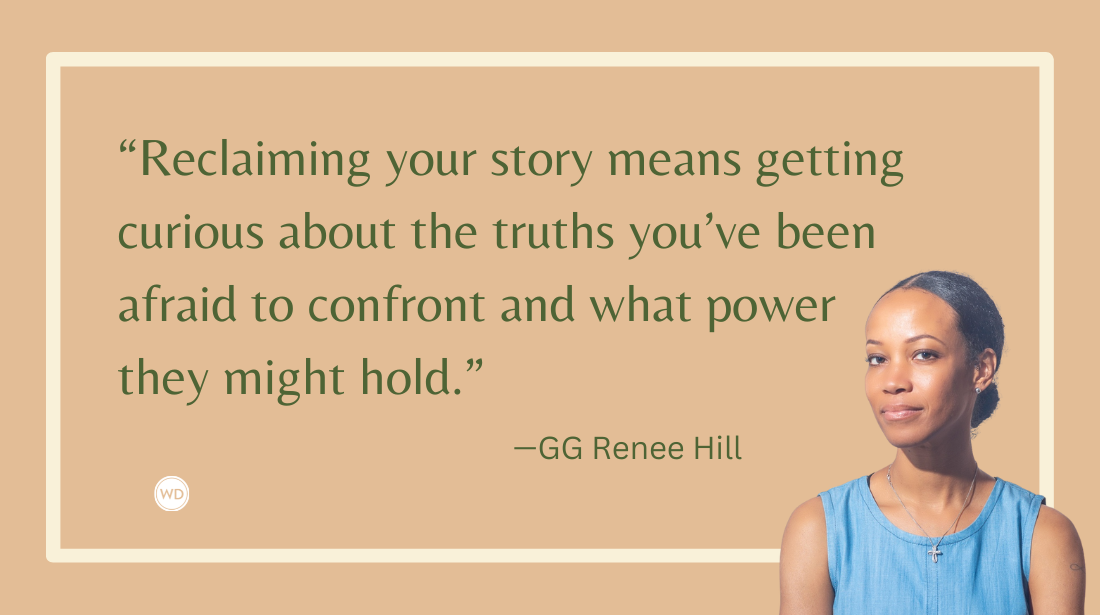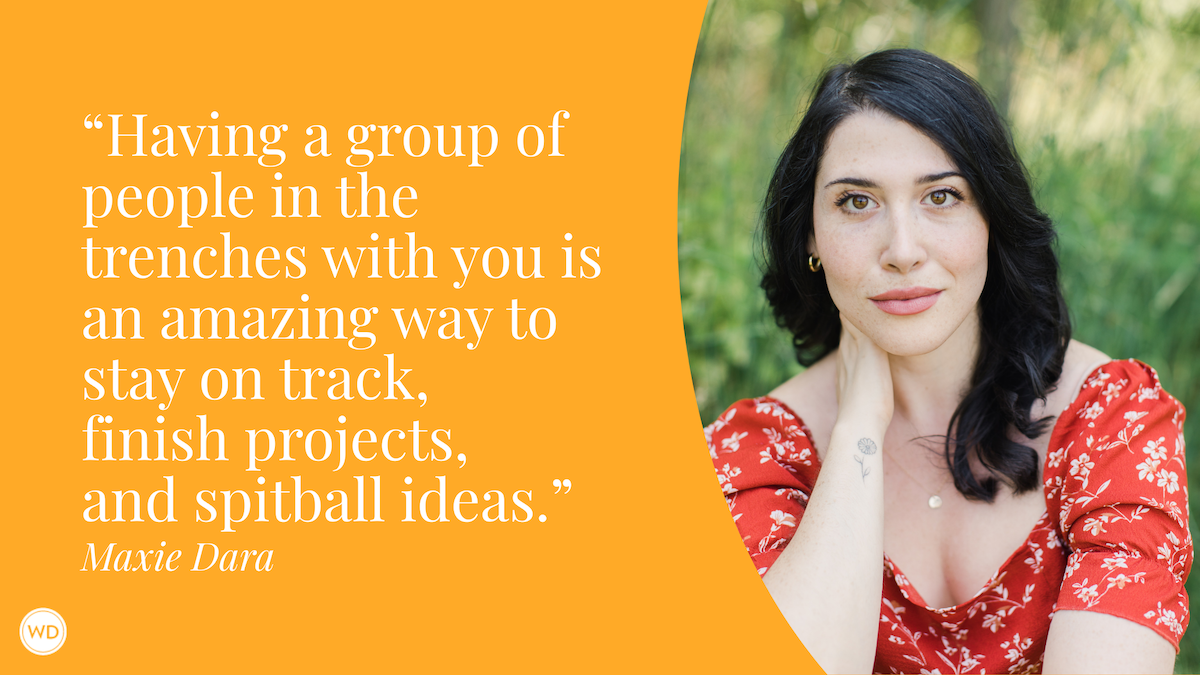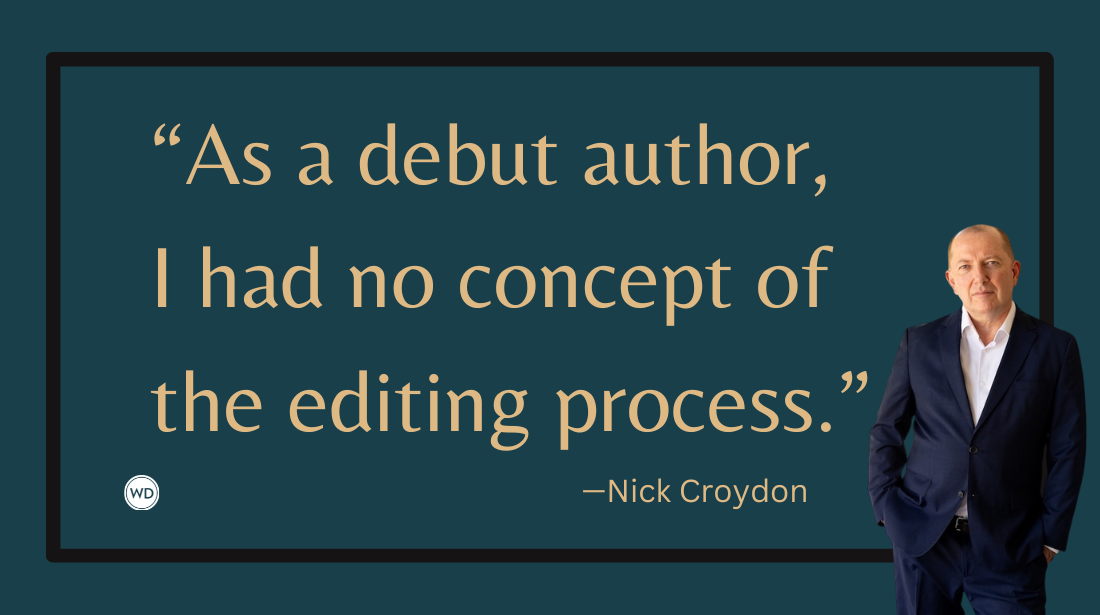Stormwriting: What It Is and Why You Should Try It
Now you’re to the point where you’re ready to start crafting your book. You’ve done a bit of brainstorming, and perhaps you’ve done some writing. But there’s something about brainstorming…
Now you’re to the point where you’re ready to start crafting your book.
You’ve done a bit of brainstorming, and perhaps you’ve done some writing. But there’s something about brainstorming that’s only partly right. After years of writing, teaching writing, and talking with writers, I’ve come to realize that brainstorming is a critically misunderstood process. Bad practices have become common.
Most people have been told that brainstorming is where you sit with a blank piece of paper and you’re supposed to just, like force out new ideas. Well that’s fine, but how?
*********************************************************************************************************************************
This guest post is by bestselling author and writing authorityElizabeth Sims. She's the author of seven popular novels in two series, including The Rita Farmer Mysteries and The Lillian Byrd Crime series. She's also the author of the excellent resource for writers, You've Got a Book in You: A Stress-Free Guide to Writing the Book of Your Dreams, published by Writer's Digest Books. Click here to order now.
*********************************************************************************************************************************
Too often we get stuck in a rigid idea of what a brainstorm is supposed to be. We figure we’re supposed to go fast, so we’re supposed to write only ideas. Single words, little phrases, just get the gist of the idea down and move on to the next. We’re supposed to ‘think laterally’, but lateral all too often winds up being shallow, a few interesting thoughts but no depth.
There is a better way.
The answer, I found, lies in the very word ‘brainstorming.’ I don’t like that word. It puts too much emphasis on thinking.
You need to use something deeper and more productive to write a good book: You need to engage your heartbrain, that is to say your whole, deepest self. When you tap into your heartbrain, you’ll be writing up a storm, which is why I call this next technique stormwriting. This is a results-driven tool that you’ll use time and again. I use it constantly.
Stormwriting is essentially a heartbrainstorm, a process by which you open your heartbrain and provoke it to not merely dump stuff out, but generate new questions and ideas that lead you to more good stuff: The stuff that becomes building blocks for your book. How do you provoke it?
In one of my mystery series, my main character is an actress. In gathering background on acting, I often talk with a friend of mine who’s a professional actor. One day we were talking about improv. You know, improvisation, a theatrical situation in which actors play off of each other unscripted. They create little dramas and comedies just by speaking dialogue and acting out scenes they think up as they go.
I said I thought improv must be awfully hard.
And my friend Phil said that what makes improv hard is having the wrong attitude.
“What attitude is that?” I asked.
“No,” he said.
“You mean as in No, I don’t like that idea?”
“Right.” Phil then revealed the most important attitude to have when doing improv.
It is, simply, “Yes, and—”
Meaning that no matter what somebody comes up with, no matter how much it’s not what you’re expecting, no matter how off the wall or even dumb, you don’t resist it or ignore it. You run with it. You say, “Yes, and—” … and the room begins to fill with the mutant ions from the forgotten medical waste facility next door! “Yes, and—” … and suddenly your ingénue character is on a ten-million-dollar yacht with the dictator’s son, who just opened champagne and proposed marriage.
You never say “No, but—.” You never even say “Yes, but—.” You say, “Yes, and—.” You accept it and you go with it, and you build on it and you play off of it. The whole act might stumble and change direction anytime, but you’ll be in harmony with it.
And I realized that writing is improv.
I thought about that some more and the idea of stormwriting came to me. I realized that in practically any stage of writing, when you’re brainstorming, trying to create new material, it’s like doing improv. And just like improv, it requires more than your head. It requires your heartbrain.
So now we have:
The First Stress-Free Guideline to Stormwriting
Yes, and—
Use this when you’re forming ideas for your book. Don’t just write down the beginning of a thought and then sit and stare at it. Move with it. Let it move with you.
Yes, and— goes perfectly with:
The Second Stress-Free Guideline to Stormwriting
What if?
The golden guideline all excellent storytellers keep in their back pocket is What if? They’re never without it.
Yes, and— and What if? together, are the most fruitful, lively activators you can use in mining your heartbrain and crafting creative material. These two tiny phrases will take you as far as you can dream of going.
Let me demonstrate how they can conduct you from an initial idea to a whole book.
One day I got an idea for a novel I wanted to write, using my actress hero, Rita Farmer. I thought, wouldn’t it be cool to have her dressed in police costume on a movie shoot, and she wanders away from the set for some reason, and gets drawn into a real crime scene?
That was the nugget I started with. I thought, that’s a terrific opening. That’s all it was, an opening, but I immediately saw that mistaken identity, costume, impersonation, could all become themes going forward, subjects for me to explore and have fun with in the book.
I stormwrote. It stood to reason to use Los Angeles as the setting for this story, since that’s where Rita lives. Questions that I asked myself were: OK, what’s the main plot, and what are my subplots going to be?
OK, we’re in a big city. What’s a typical street crime in a big city? Well, there’s drug dealing, there’s assault and battery, there’s rape. I’ll make my initial crime a combo: I could have a young guy being beaten up by two gang-bang types. Yes, and Rita will walk into this assault and stop it. What if she gets shot while she does it? Yes, and she’ll ride to the medical center with the beaten-up kid, and they will find out that they have something in common. But what? I’m not sure right now, but I know the young kid will be the messenger in this heroic adventure that Rita will take.
Wait, what do you mean by ‘the messenger’?
I think you already have a sense of what I mean, but for the full deal see the Hero’s Adventure Foolproof Story Map, Chapter Ten.
Suddenly I was writing lots more than just little isolated words or phrases on the page. I was stormwriting, going off on major tangents, writing half a page, two pages, or more per idea, then returning to my main idea page. My head was engaged. I paid attention to my emotions, too, letting them come and go with the flow from my pen.
I wrote a couple of pages on what the assault might look and sound like; I started a list of stuff I needed to look into. Started a list of characters I needed: the movie crew and the other actors, the young kid, the thugs who were beating him. I wrote half a page about what kind of movie might be shot in a gritty area of L.A., then a page about the kid. On and on.
This article on writing a book, by Elizabeth Sims, first appeared in You've Got a Book in You: The Step-by-Step Guide to Writing the Book of Your Dreams. Click here to order your copy.
Want to learn more?Expand your writing knowledge with these great writing books:









